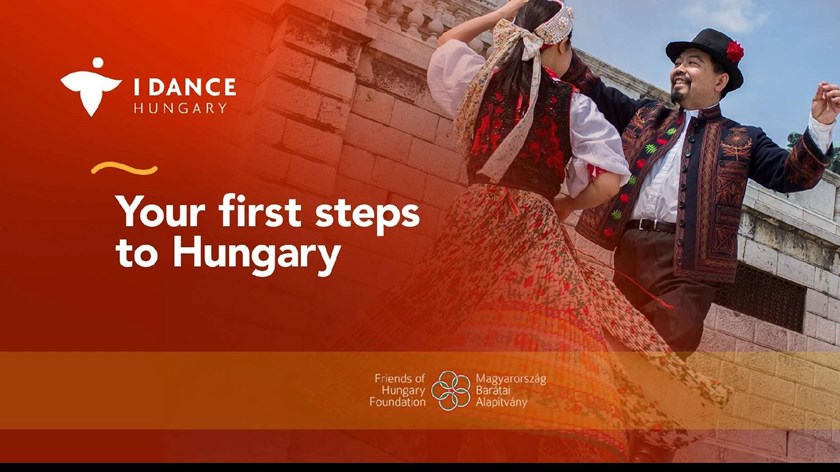I Dance Hungary – Website with Folk Dance Tutorials for Non-Hungarian Speakers Launched

I Dance Hungary – Website with Folk Dance Tutorials for Non-Hungarian Speakers Launched
I Dance Hungary, the first online platform in the world dedicated to the non-Hungarian speakers of the dance house movement, started today under the patronage of the Friends of Hungary Foundation. The platform uses tutorials to help dance-lovers learn the basics of folk dance without needing to know Hungarian.
The main aim of the platform is to create a bridge between non-Hungarian speakers, the Hungarian diaspora and Hungarian culture via folk dance. By the 21st century, the dance house movement became one of the most important retaining powers of the Hungarian diaspora. It also served as a vital tether to Hungarian culture for those with no other connection to the country.Mihály Rosonczy-Kovács, violinist, art director at Fonó Music House and mastermind behind I Dance Hungary, explained the reasoning behind the project at a press conference earlier today:
Hungarian folk music and folk dance are wonders that can be used to make our culture understood abroad. With the help of this English-language online platform that has just been launched, Hungarians living abroad, or those who are just interested in foreign countries, are given the tools to get to know our culture better.
At the launch, Orsolya Karlócai, managing director of the Friends of Hungary Foundation and implementer of the project, explained why the foundation supports the project and discussed Dance Hungary’s motivations and goals. Karlócai detailed how the Friends of Hungary Foundation has worked tirelessly to create a more complete and accurate public image of Hungary and Hungarians since it got its start in 2011. She added that the Foundation thinks of itself as a bridge between academic figures and those involved in public life in Hungary and abroad. With the help of I Dance Hungary, they can address those interested in Hungary and Hungarian culture and inform them about the country. Karlócai added that the webpage is also connected to Hungary Today, the leading English-language news portal in Hungary. Along with the most recent cultural and lifestyle news, audiences of I Dance Hungary can also broaden their interest in Hungarian culture.
Anna Hegedűs, Szilárd ‘Sziszi’ Szabó, Mihály Rosonczy-Kovács, Orsolya Karlócai, Alejandra Blum (photo: Bezsenyi Zsolt / Fonó)
However, the most important pillar of the I Dance Hungary platform is the dance lesson tutorials accompanied by English subtitles—a vital addition allowing anyone interested in Hungarian culture to learn folk dance. The courses – focused on the traditional dances of two regions, Szék and Somogy – are led by masters of Hungarian folk dance. Norbert Kovács “Cimbi” is the project’s dance director, and the dances are taught by Szilárd Szabó “Sziszi” and Rubinka Szabó. The videos were recorded with three cameras, focusing thoroughly on the movement of the upper body, legs and body as a whole. The tutorials are accompanied by music performed by well-known folk musicians Júlia Kubinyi, Szabó Szilárd “Sziszi” and Halmos Attila. Kubinyi also performs folk songs in the song section of the page. The songs are available with karaoke versions as well as English translations.
Alejandra Blum’s family emigrated to Uruguay, and despite living with her grandparents who only spoke Hungarian, she didn’t learn the language. She joined a Hungarian community in Montevido where she was able to learn folk dance and a form a special bond with Hungary and its culture. Because of this strong connection, she decided to move to Hungary at the age of 18. Now that she has studied and learned the language, she considers herself Hungarian and is passionate about the importance of passing on the knowledge and culture of her ancestors. A full interview with Alejandra can be found in the first volume of Remigrates (Visszidensek), published under the patronage of the Friends of Hungary Foundation. In the book, journalist Péter Gyuricza interviews twelve Hungarian people who have decided to return home despite leaving the country decades ago.
Orsolya Karlócai (left) and Alejandra Blum (right) at the launch of the website (photo: Bezsenyi Zsolt / Fonó)
At the event, attendees enjoyed a special video message from Kenneth Tse, one of the living examples of the importance of and necessity of the project. Tse, a folk dancer from Hong Kong, decided almost a decade ago to found a Hungarian dance group with his Asian fellows after 30 years of culture cultivating. Since then, Tse has traveled multiple times, selling out several concert venues with his dancers across the globe. This summer, Hungary Today had the pleasure of meeting Tse and speaking with him about his dance group and experience with Hungarian folk culture:
Mihály Rosonczy-Kovács shared that an added introduction to the dance lesson videos informs users that the tutorials are meant to serve as complementary aids for those who can’t find an in-person instructor. The team behind I Dance Hungary encourages anyone interested in learning Hungarian dance to visit the villages in the Carpathian basin.
I Dance Hungary will host a webpage launching dance house event at 8 pm this Saturday at Fonó music house in Buda.
via: Hungary Today